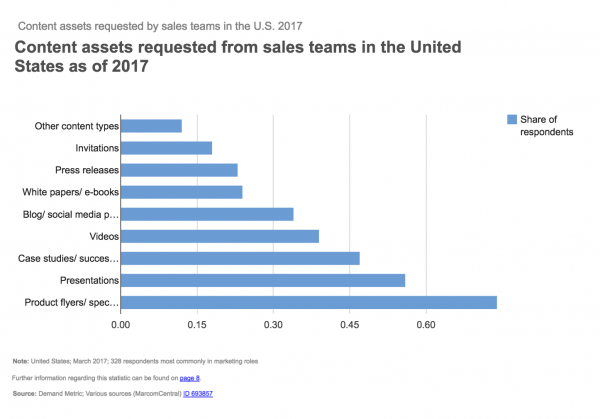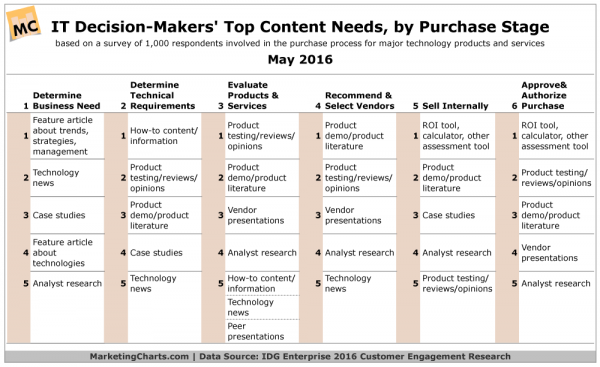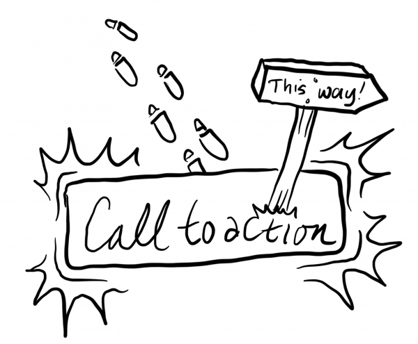
B2B Articles - September 30, 2017
 Business-to-Business (B2B) case studies are a way for companies to showcase the value their solutions provide to clients. The goal is to establish proof and build trust so the prospect feels comfortable progressing down the funnel.
Business-to-Business (B2B) case studies are a way for companies to showcase the value their solutions provide to clients. The goal is to establish proof and build trust so the prospect feels comfortable progressing down the funnel.
Since the solutions behind the B2B company is sometimes complicated, writers sometimes struggle to explain the problem, solution, and outcome clearly to the reader. The goals of a B2B case study are to identify whether or not the product or service is a good fit, build a sense of trust, offer proof, and showcase the outcomes or value in context.
B2B companies use on average 13 tactics for marketing campaigns. A whopping 82% of B2B organizations use case studies (TopRank Marketing), and 65% of B2B businesses find them to be an effective tool (TopRank Marketing).
A lot of content is needed in the B2B marketing and sales journey.

Case studies play an important role in establishing proof and trust in the B2B content marketing and sales process.

B2B marketers have a tough task of simplifying their solutions and appealing to various audiences (executive buyers, highly-technical buyers, finance-driven buyers, and those that may become direct users) at the same time. However, no matter who the target is, case studies are an effective way of reaching the audience and explaining technological benefits of the product.
For those ready to write B2B case studies, there are a few tips to keep in mind.
Most case studies, in general, discuss the problem and offer the product as the solution. The “problem,” however, should not be something super specific that only a one or two buyers face. Businesses should instead write a case study that provides context on the market, challenges, outlines the internal solution, explains the goals of the client, and also offers contextual elements. Ideally, the viewer realizes they have a lot in common with the issue described, so they want to keep reading to learn more about the solution.
Instead of just listing “problem” and “solution,” take the reader through the experience. Describe the problem, illustrate failed attempts at solving the problem, showcase the struggle the client went through dealing with this issue. While you don’t need to be overly dramatic, storytelling helps the reader experience the message, instead of reading through it quickly.
Writers can even add suspense or thrills in the case study if done appropriately, but the main focus should center around the buyer’s perspective. Using buyer personas when writing case studies ensures companies better speak to the right value proposition and set of needs.
As the story unfolds, explain how the problem is solved by the client, how the client overcame the dilemma, etc. What you want is that the reader understands how your business supported the client the entire way as they searched and found a proper solution. At the end of the story, which should not drone on, the potential customer should grasp what exactly happened to the client and how your company was the savior.
Especially if stuck on how to begin, outline your case by with addressing the problem, solution and outcome. Begin with the problem, describing it with storytelling elements that appeal to the buyer. Then, explain the solution provided -- maybe this is one element of your product or service or everything as a whole. Next, illustrate the outcome; this can be done with bullet points using numbers and/or with quotes from the client. Afterwards, be sure to include a strong call to action that drives to the next logical step in the sales journey.
There are also different types of case studies that can help add value to the buyer. Sometimes case studies are anonymous, carefully describing the problem, solution, and outcome without actually naming the client. Other times, they use the client’s name and take time to describe their business. Whichever type you choose, it’s important to outline the core elements of the case study first.
After the potential client reads the story, they may be hooked, so a good way of really drawing them in is through facts. Data and numbers are very attention-grabbing and are sometimes the first thing new visitors see when landing on your case study. Also remember that your case study will have many different types of viewers: some who prefer numbers only and some who want a story to accompany facts. Therefore, using both can capture the attention of a wider audience.
73% of B2B buyers seek out case studies (Demand Gen Report), but that doesn’t mean that they are ready to just sit in front of large sets of text. Use charts, diagrams, infographics, images, and videos to create a more enticing case study; one that is easy to digest. After explaining a concept or a part of the story, give the reader a visual to help them truly understand the information described.
Here are a list of great video tools for marketing and sales.
If you have your story, your statistics, and your visuals, then the case study should be shaping up and almost finished.

It’s important that you summarize at the end of the case study - what happened, what was achieved, etc. - and then conclude the case study with a call to action (CTA) which helps guide the reader to the next logical step in the buyer's journey. The end summary can talk to the new, potential client, explaining how this strategy can help others as well. Then, finish with an action you want the reader to complete. Since the point of the case study is to gain new clients, it’s important the CTA is clear and direct, so the reader knows what to do next.
Though 31% of marketers cited case studies as the most difficult type of content to produce (One Spot), these tips should help you write a successful and useful B2B case study to use for lead generation. Since B2B companies often have more difficult concepts to explain, the case study should remain a top tactic to draw in new clients.
Sources
Tel 212-993-7809
Ironpaper ®
10 East 33rd Street
6th Floor
New York, NY 10016
Map
First-party data marketing
SEO for B2B
Customer journey strategy
ABM Agency
Marketing for IoT Companies
HubSpot Implementation
B2B Product Marketing
Measurable Marketing
IoT go-to-market strategy
IT Marketing
HubSpot for ABM
Go to market strategy
Technology Marketing
Marketing for IT Companies
ABM Campaigns
B2B lead generation
B2B Marketing and Growth Agency.
Grow your B2B business boldly. Ironpaper is a B2B marketing agency. We build growth engines for marketing and sales success. We power demand generation campaigns, ABM programs, create B2B content, strengthen sales enablement, generate qualified leads, and improve B2B marketing efforts.